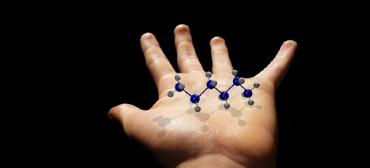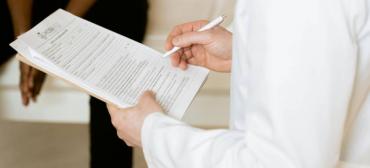Lumbar Puncture (LP)
(Spinal Tap, Spinal Puncture, CSF Collection)
Procedure Overview
What is a lumbar puncture?A lumbar puncture (LP), also known as a spinal tap, is a diagnostic and/or therapeutic procedure performed by a physician. The procedure is performed by inserting a hollow needle into the subarachnoid space in the lumbar area (lower back) of the spinal column. The subarachnoid space is the canal in the spinal column that carries cerebrospinal fluid (CSF) between the brain and the spinal cord.
CSF is a clear fluid that bathes the brain and spinal cord while protecting it, like a cushion, from exterior injury. The fluid is produced and reabsorbed in the brain on a continuous basis. CSF is composed of cells, water, proteins, sugars, and other vital substances that are essential to maintain equilibrium in the nervous system.
| |
| Click Image to Enlarge |
Other related procedures that may be used to diagnose problems with the spine or brain include myelography (myelogram), computed tomography (CT scan), or magnetic resonance imaging (MRI). Please see these procedures for additional information.
Anatomy of the spineThe spinal column is made up of 33 vertebrae that are separated by spongy disks and classified into distinct areas.
-
The cervical area consists of seven vertebrae in the neck.
-
The thoracic area consists of 12 vertebrae in the chest area.
-
The lumbar area consists of five vertebrae in the lower back area.
-
The sacrum has five, small fused vertebrae.
-
The four coccygeal vertebrae fuse to form one bone, called the coccyx or tailbone.
The spinal cord, a major part of the central nervous system, is located in the vertebral canal and reaches from the base of the skull to the upper part of the lower back. The bones of the spine and a sac containing cerebrospinal fluid surround it. The spinal cord carries sense and movement signals to and from the brain and controls many reflexes.
Reasons for the ProcedureA lumbar puncture may be performed for various reasons. The most common reason is to remove a small amount of CSF for examination and diagnosis of various disorders. CSF is tested for red and white blood cells, protein, glucose (sugar), clarity, color, and the presence of bacteria, viruses, or abnormal cells. Excess CSF may also be removed in patients who have an overproduction or decreased absorption of the fluid.
A lumbar puncture procedure may be helpful in diagnosing many diseases and disorders including, but not limited to, the following:
-
Meningitis - an inflammation of the membrane covering the brain and spinal cord; The inflammation is usually the result of a viral, bacterial, or fungal infection, or the result of exposure to toxins or abnormal cells.
-
Encephalitis - an inflammation of the brain that is usually caused by a virus
-
Certain cancers involving the brain and spinal cord
-
Bleeding in the subarachnoid space
-
Reye syndrome - a potentially fatal disease that causes severe problems with the brain and other organs; Although the exact cause of the disease is not known, there has been an association between giving aspirin to children and the development of Reye syndrome. It is now advised not to give aspirin to children during illnesses, unless prescribed by your child's physician.
-
Myelitis - an inflammation of the spinal cord or bone marrow
-
Neurosyphilis - a stage of syphilis during which the bacteria invades the central nervous system
-
Guillain-Barré syndrome - a disorder in which the body's immune system attacks part of the nervous system
-
Demyelinating diseases - diseases that attack the protective coating that surrounds certain nerve fibers (e.g., multiple sclerosis or acute demyelination polyneuropathy)
-
Headaches of unknown cause - After appropriate evaluation by a physician and appropriate head imaging if necessary, certain inflammatory conditions that can result in a headache may be diagnosed by lumbar puncture and CSF analysis.
-
Pseudotumor cerebri (also called idiopathic intracranial hypertension, or IIH) - a condition in which pressure within the subarachnoid space is elevated for reasons that are still not clear; A lumbar puncture is only done in this condition after appropriate physician evaluation and head imaging.
-
Normal pressure hydrocephalus - a rare condition affecting mainly older individuals in which there is a triad of loss of urinary control, memory problems, and an unsteady gait (ataxia); On head imaging, the normal spaces containing CSF in the brain are enlarged. A lumbar puncture is performed to see if the pressure of the CSF is elevated or not.
In addition, a lumbar puncture may be used to measure the pressure of the CSF, which flows freely between the spinal column and the brain. The physician measures the pressure during a lumbar puncture using a special tube (called a manometer) that is attached to the lumbar puncture needle.
Finally, a lumbar puncture may be performed therapeutically to inject medications directly into the spinal cord. Some medications that may be given via lumbar puncture (intrathecally) include: spinal anesthetics before a surgical procedure, contrast dye for x-ray studies (e.g., myelography), or chemotherapeutic agents to treat cancer.
There may be other reasons for your physician to recommend a lumbar puncture.
Risks of the ProcedureBecause this procedure involves the spinal cord and brain, the following potential complications may occur:
-
A small amount of CSF can leak from the needle insertion site. This can cause headaches after the procedure. If there is a persistent leak the headache can be severe.
-
There is a slight risk of infection because the needle breaks the skin’s surface, providing a possible portal of entry for bacteria.
-
A temporary pain or numbness to the legs or lower back pain may be experienced.
-
There is a risk of bleeding in the spinal canal.
-
Should there be increased pressure or swelling in the brain before the procedure, a lumbar puncture can cause fluctuations in the CSF fluid levels, resulting in brain herniation. Herniation is a dangerous event in which the brain stem or top of the spinal column is compressed by swelling of the brain. This will occur only in the most rare of circumstances because your physician will almost always have determined the safety of a lumbar puncture by first reviewing some kind of radiographic imaging of your brain.
There may be other risks depending upon your specific medical condition. Be sure to discuss any concerns with your physician prior to the procedure.
Before the Procedure-
Your physician will explain the procedure to you and offer you the opportunity to ask any questions that you might have about the procedure.
-
You will be asked to sign a consent form that gives your permission to do the procedure. Read the form carefully and ask questions if something is not clear.
-
Generally, fasting is not required prior to a lumbar puncture unless a sedative is prescribed. Your physician will instruct you prior to the procedure of any necessary fasting requirements.
-
Notify your physician if you are pregnant or suspect you may be pregnant.
-
Notify your physician of all medications (prescribed and over-the-counter) and herbal supplements that you are taking.
-
Notify your physician if you have a history of seizures or if you are taking any prescribed medications for seizures.
-
Notify your physician if you have a history of bleeding disorders or if you are taking any anticoagulant (blood-thinning) medications, aspirin, or other medications that affect blood clotting. It may be necessary for you to stop these medications prior to the procedure.
-
If the procedure is performed on an outpatient basis, you may be asked to remain in the hospital for several hours following the procedure. You should plan to have another person drive you home.
-
Based upon your medical condition, your physician may request other specific preparation.
A lumbar puncture procedure may be performed on an outpatient basis or as part of your stay in a hospital. Procedures may vary depending on your condition and your physician's practices.
Generally, a lumbar puncture follows this process:
| |
| Click Image to Enlarge |
-
You will be asked to remove any clothing, jewelry, or other objects that may interfere with the procedure.
-
You will be given a gown to wear.
-
You will be reminded to empty your bladder prior to the start of the procedure.
-
During the lumbar puncture you may lie on the examination table on your side with your chin tucked to your chest and knees tucked to your abdomen. Alternatively, you may sit on the edge of an examination table with your arms draped over a table positioned in front of you. In either position the back is arched, which helps to widen the intervertebral spaces.
-
A lumbar puncture is a sterile procedure. Therefore, your back will be cleansed with an antiseptic solution and draped with sterile towels. The physician will wear sterile gloves during the procedure.
-
The physician will anesthetize the skin by injecting a local anesthetic that numbs the site. This injection may sting for a few seconds, but makes the lumbar puncture less painful.
-
The hollow needle will be inserted through the numbed skin and into the subarachnoid space where the CSF is located. You will feel some pressure while the needle is inserted. You must remain absolutely still during the insertion of the needle.
-
The CSF will begin to drip out of the needle and a small amount, about one tablespoon, will be collected into test tubes.
-
If the physician needs to inject medication into the spinal canal, it will be given through the same needle after the CSF is collected.
-
When the procedure is completed, the needle will be removed and an adhesive bandage will be placed over the injection site. The test tubes will be taken to the laboratory for analysis.
-
You should notify the physician if you feel any numbness, tingling, headache, or lightheadedness during the procedure.
You may experience discomfort during a lumbar puncture. The physician will use all possible comfort measures and complete the procedure as quickly as possible to minimize any discomfort or pain.
After the ProcedureYou usually will be asked to lie flat for about one hour after the lumbar puncture is completed. This helps reduce the incidence of a headache. You will be allowed to roll from side to side as long as your head is not elevated. You may be asked to urinate in a bedpan during the time that you are required to stay flat.
You will be asked to drink additional fluids to rehydrate after the procedure. This replaces the CSF that was withdrawn during the spinal tap and reduces the chance of developing a headache.
When you have completed the recovery period, you may be taken to your hospital room (if the procedure was performed elsewhere in the hospital) or discharged to your home. If you go home, usually your physician will advise you to only engage in very light activity the rest of the day.
Once you are at home, notify your physician of any abnormalities, such as numbness and tingling of the legs, drainage of blood or pain at the injection site, inability to urinate, or headaches. If the headaches persist for more than a few hours after the procedure, or when you change positions, you should contact your physician.
You may be instructed to limit your activity for 24 hours following the procedure. Generally, if no complications occur, you may return to your normal diet and activities.
Your physician may give you additional or alternate instructions after the procedure, depending on your particular situation.
Related Questions
Mantoux Test Query
- 3953 Days ago
- Tests & Procedures
My Rheumatoid Factor is - H 74 IU/mL
- 4111 Days ago
- Tests & Procedures
Suffering from piles
- 4232 Days ago
- Tests & Procedures
widal positive
- 4346 Days ago
- Tests & Procedures
Whitish viscosity
- 4355 Days ago
- Tests & Procedures
LINAC procudure, 3DRT and IMRT
- 4369 Days ago
- Tests & Procedures
Ecg of heart showed T wave changes
- 4410 Days ago
- Tests & Procedures
CT Coronary Angiography
- 4394 Days ago
- Tests & Procedures





















